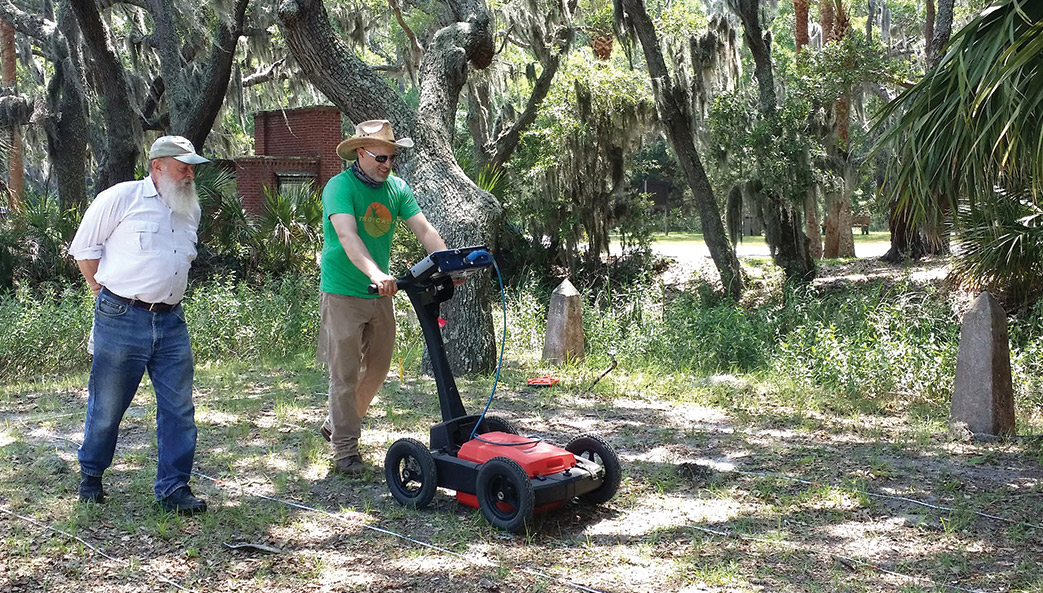Located near the town of Beaufort, S.C., Parris Island holds more than the dreams of future Marines—it contains the remains of a Spanish fort erected in 1577 in the Spanish town of Santa Elena. For decades, attempts to find it have failed, and Fort San Marcos stayed hidden until new technology brought it to light.
A team of archaeologists led by UGA’s Victor Thompson and University of South Carolina’s Chester DePratter discussed how they uncovered Fort San Marcos without scooping a shovelful of soil.
“I have been looking for San Marcos since 1993, and new techniques and technologies allowed for a fresh search,” said DePratter, who conducts research through USC’s South Carolina Institute for Archaeology and Anthropology in the College of Arts and Sciences.
Using ground-penetrating radar, soil resistivity and magnetometers, DePratter and Thompson sent radar pulses and electric currents into the ground and measured differences in local magnetic fields to search for the missing fort and to map the lost 15-acre landscape of Santa Elena.
San Marcos is one of five Spanish forts built sequentially at Santa Elena over its 21-year occupation. DePratter and Thompson have conducted research at Santa Elena since 2014 to find the fort that was founded in 1577 by Pedro Menédez Márquez, the governor of Spanish La Florida.
“This work will allow us to tell the story of the land that would eventually become the United States,” said Thompson. “Santa Elena is an important part of this history that lends insight into how colonial powers in Europe vied for control over this corner of the New World.”






